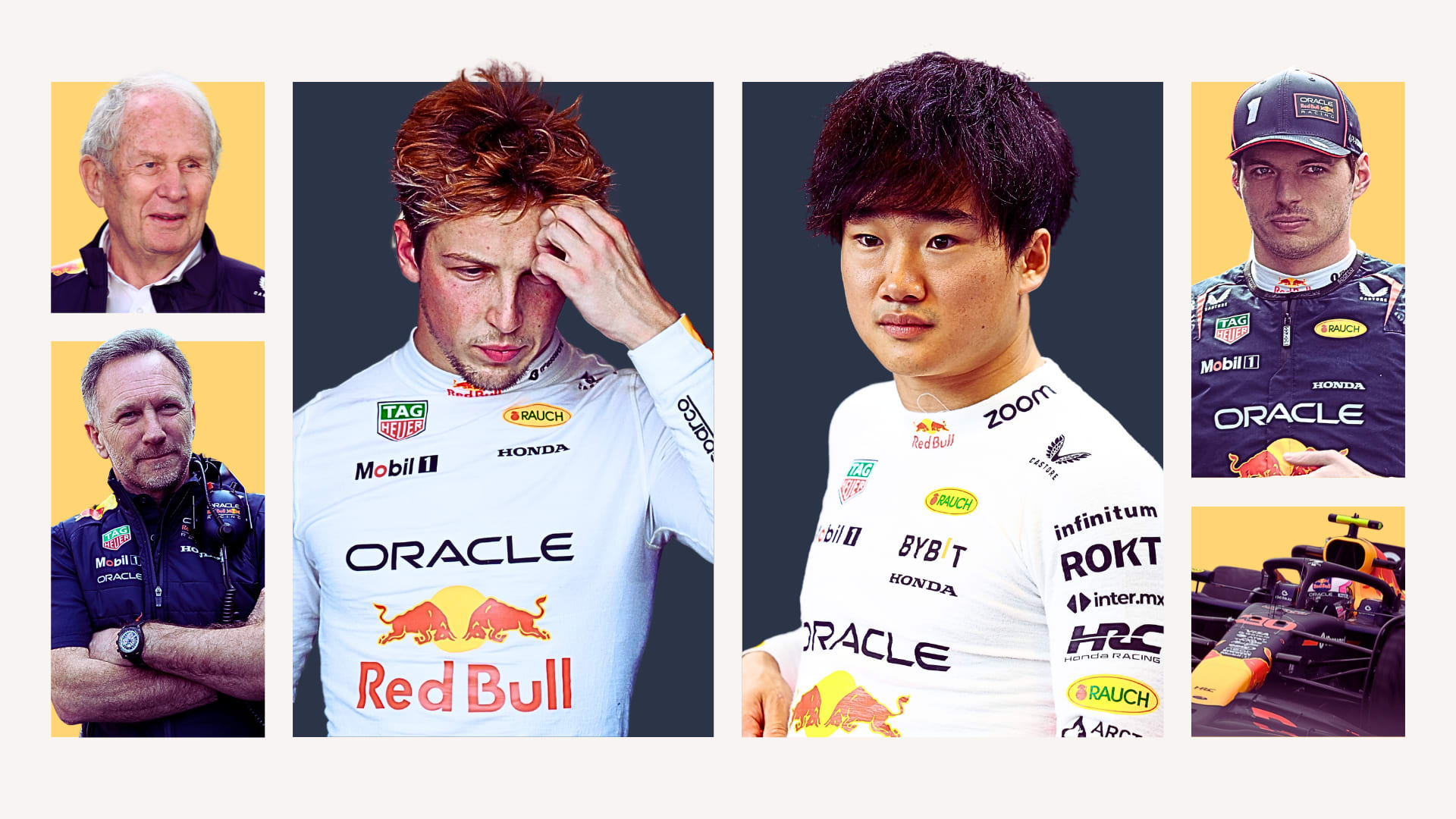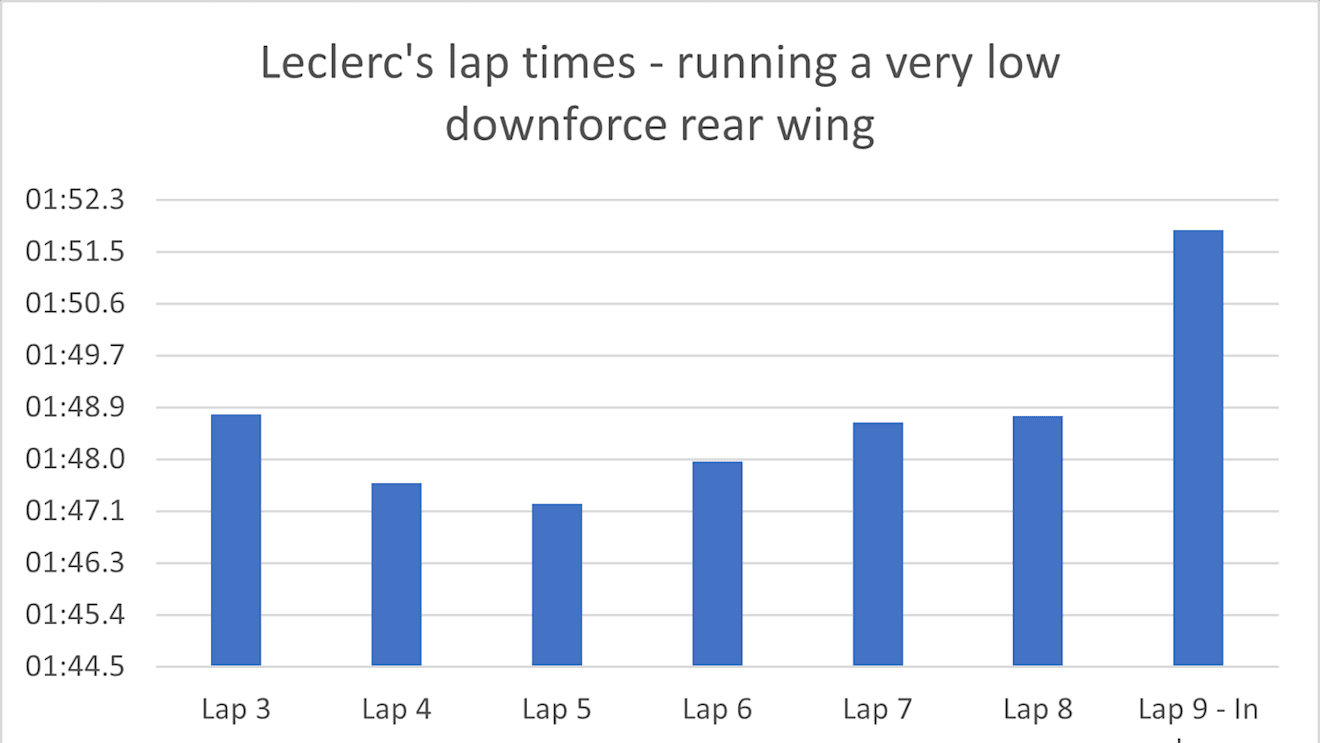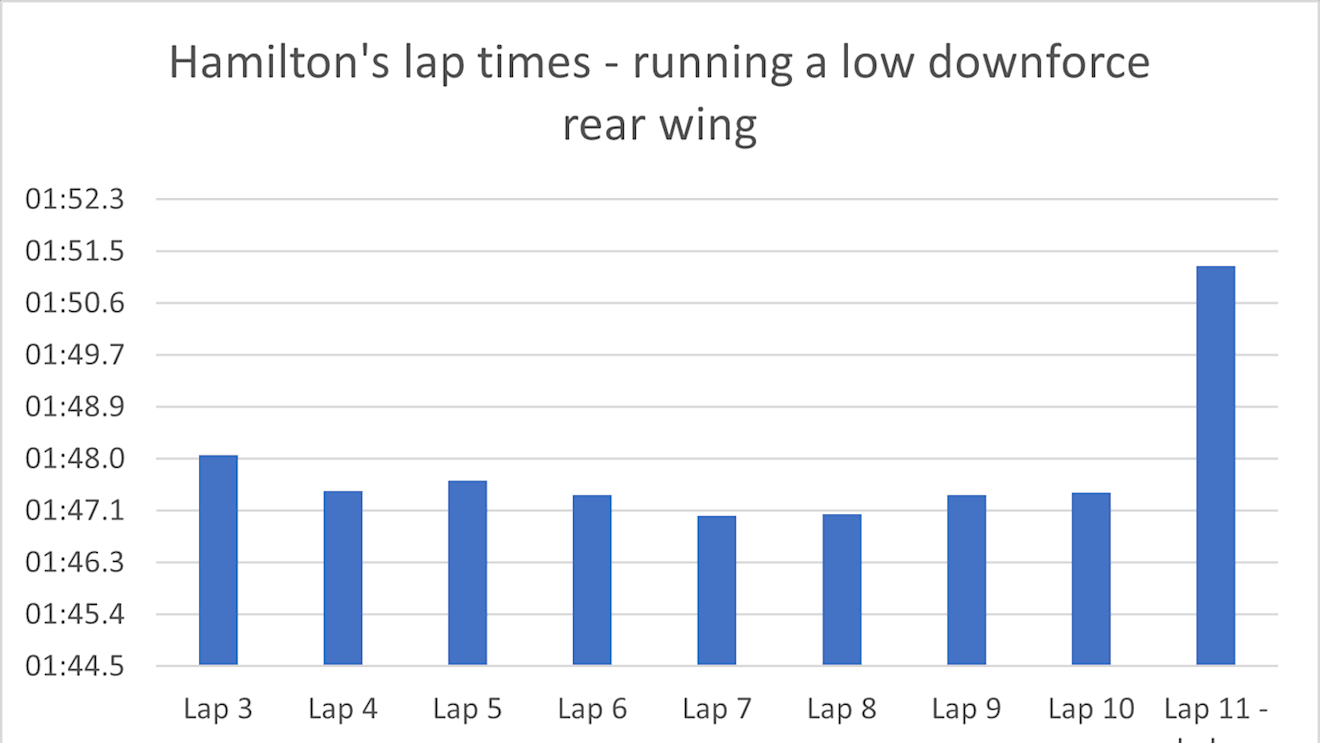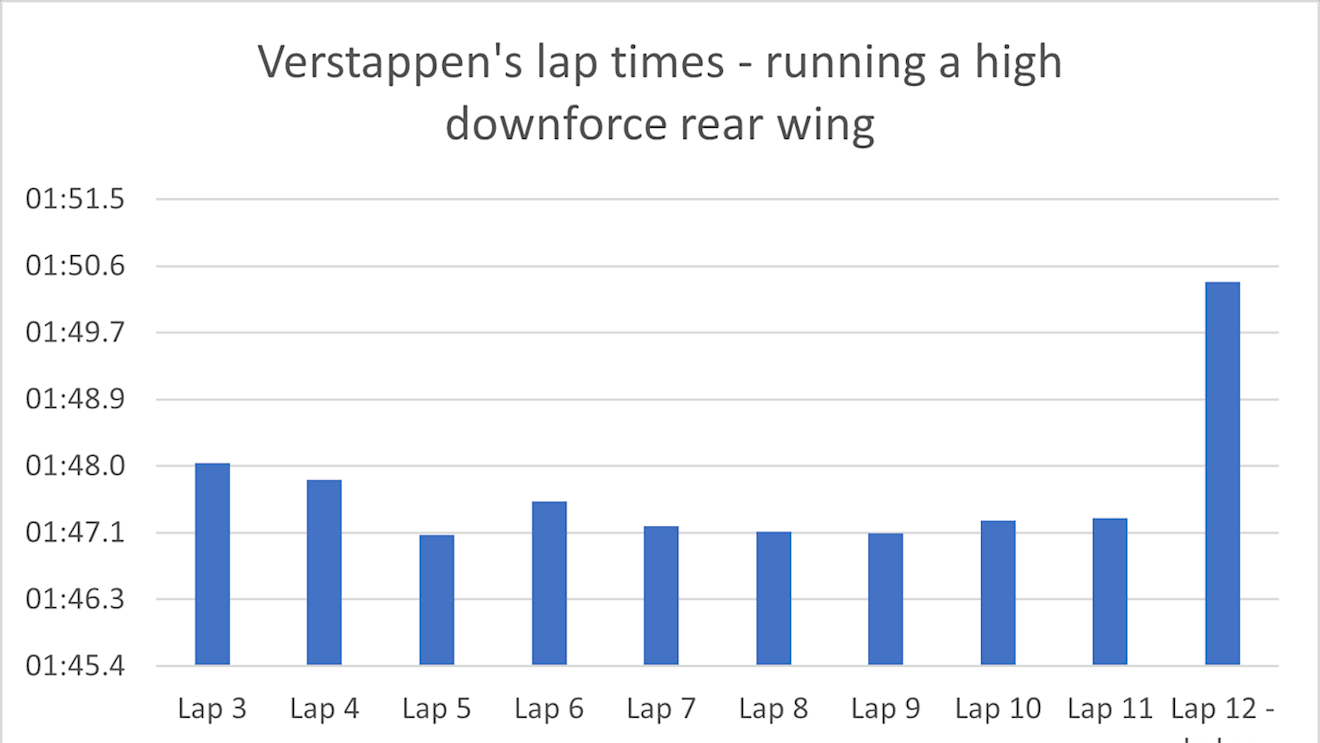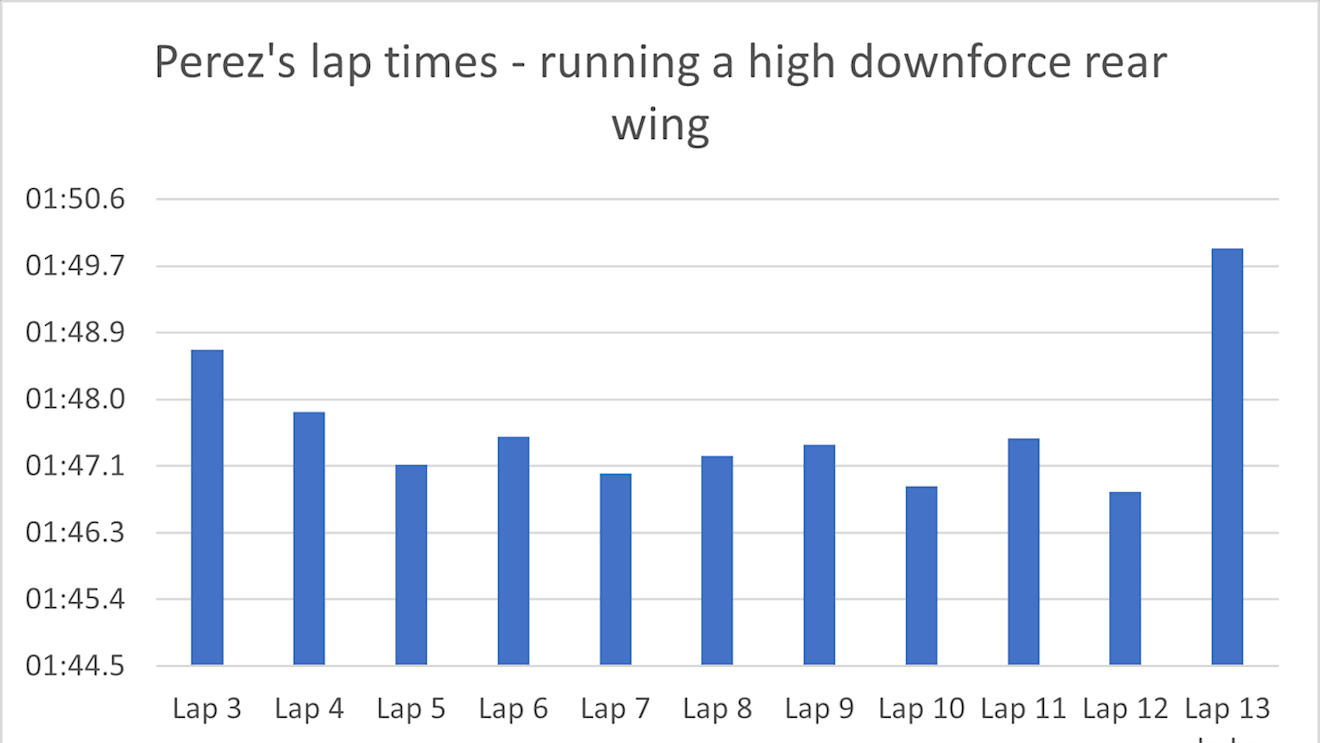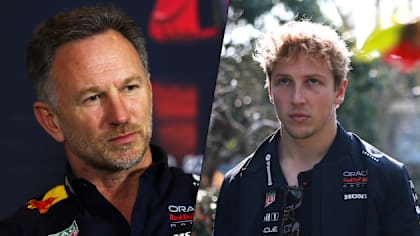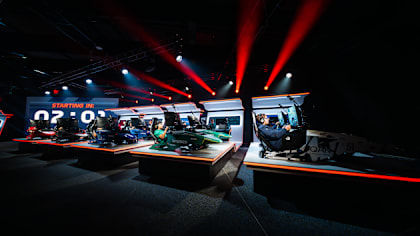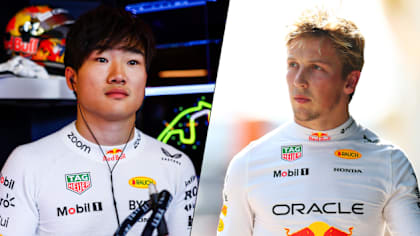
Feature
How Red Bull's set-up choice paid off in Baku – and why Mercedes and the rest had no answer

Share

Max Verstappen was denied what would have been a superb victory by his left-rear tyre blowout five laps from the end of the Azerbaijan Grand Prix. Sergio Perez then did what he was brought in to do – picking up the pieces to give Red Bull victory regardless.
The Red Bull was decisively the fastest car in the race, it being all Lewis Hamilton could do to hang on once he’d been jumped at the stops by both Verstappen and Perez. His place ahead of them on the grid (and that of Charles Leclerc’s pole-setting Ferrari) and their overcutting him at the stops was all about wing choice and tyre deg.
Rear wing sizes and tyre degradation tend to be inversely proportional around Baku. The skinny wing will probably get you a better qualifying time than the slightly bigger wing, but will induce much greater rear tyre degradation. One is slightly better in qualifying, the other much better in the race.
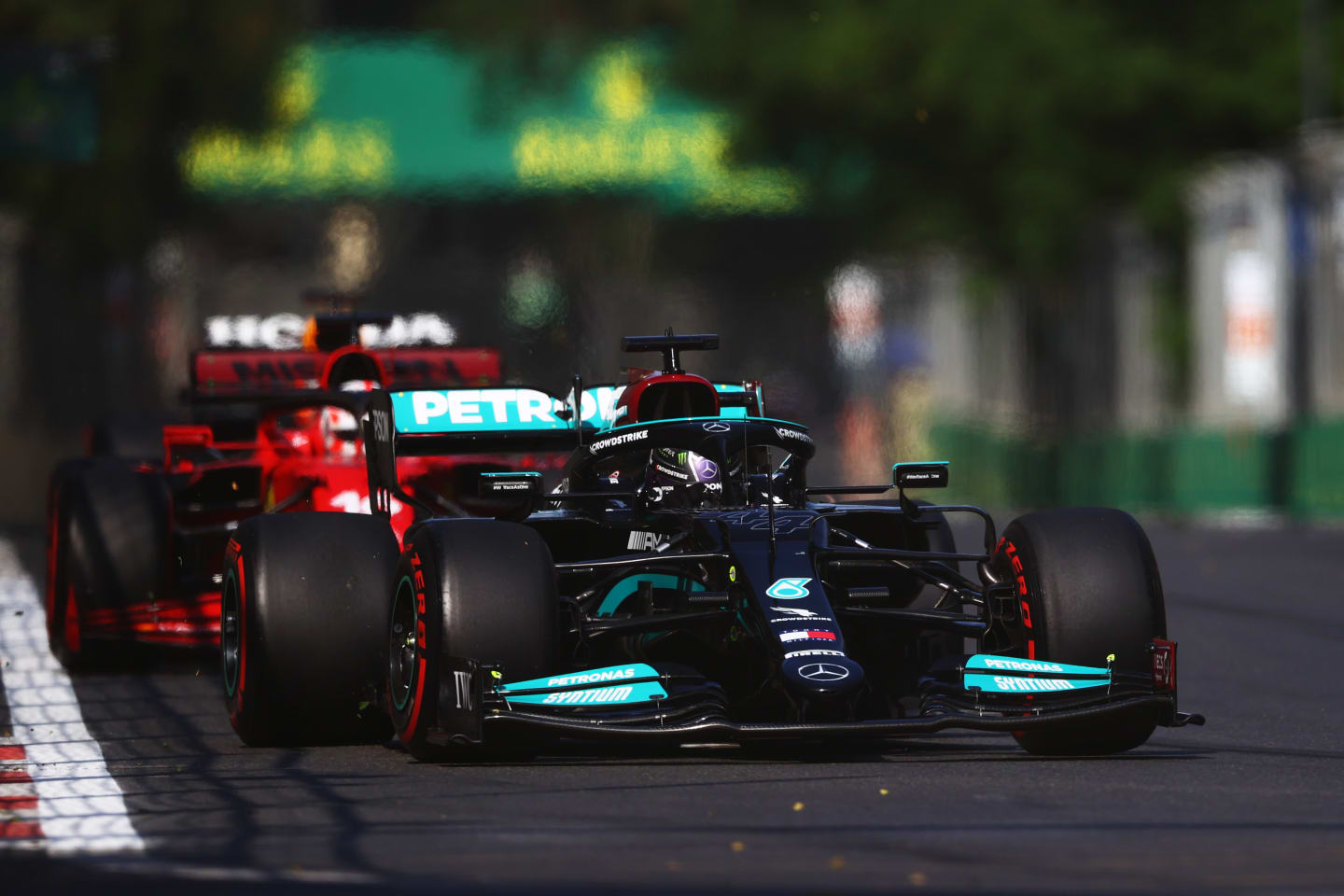
Hamilton and Leclerc weren't a match for the Red Bulls on race pace
Red Bull chose a fairly high downforce spoon profile wing, knowing they had inherently the fastest car here. Ferrari and Hamilton, knowing they were not on Red Bull’s pace, went for skinny wings to maximise their qualifying performance. Together with a red flag which limited everyone to just one Q3 run, it put the Ferrari and Mercedes ahead of Red Bull on the grid. But they were never going to stay there on race day.
A look at the lap time progression of Red Bull, Hamilton and Leclerc in the first stint on soft tyres neatly illustrates that inverse wing-tyre relationship.
Hamilton enjoyed an unencumbered run at the front once he’d slipstreamed past Leclerc at the end of the first lap. He was running in the low 1m 47s. This was around 6s slower than his qualifying time but his fuel load accounts for around half of that deficit, the used tyres around 1s of it, how hard he was using the engine maybe another 1s. The rest – the remaining 1s – is just him running at a pace that will allow the tyre to live for the stint.
1 / 4
We don’t see Red Bull’s true pace at this point because both Verstappen and Perez are in the train behind Hamilton, their bigger wings preventing them from being able to slipstream past him, even with the benefit of DRS.
But we see the respective tyre deg as Hamilton begins to slow from the ninth lap. He drops 0.3s on that lap and a further tenth of a second the following lap. Mercedes brought him in on Lap 11.
Ordinarily, this would have kept him in front of the car behind. His new tyre grip on his out-lap would be expected to be greater than the following car’s old-tyre grip on the in-lap. But that wasn’t the case here – because the tyres on the Red Bulls were still in great shape.
READ MORE: Azerbaijan GP Facts & Stats: Hamilton’s record 54-race points streak finally ends
Verstappen, despite having been in Hamilton’s dirty air for most of the first stint – something which invariably increases tyre deg – was able to do an in-lap 0.8s faster than Hamilton’s. This together with a much faster pit stop (Hamilton was delayed by Gasly’s arrival) overcut Verstappen past Hamilton.
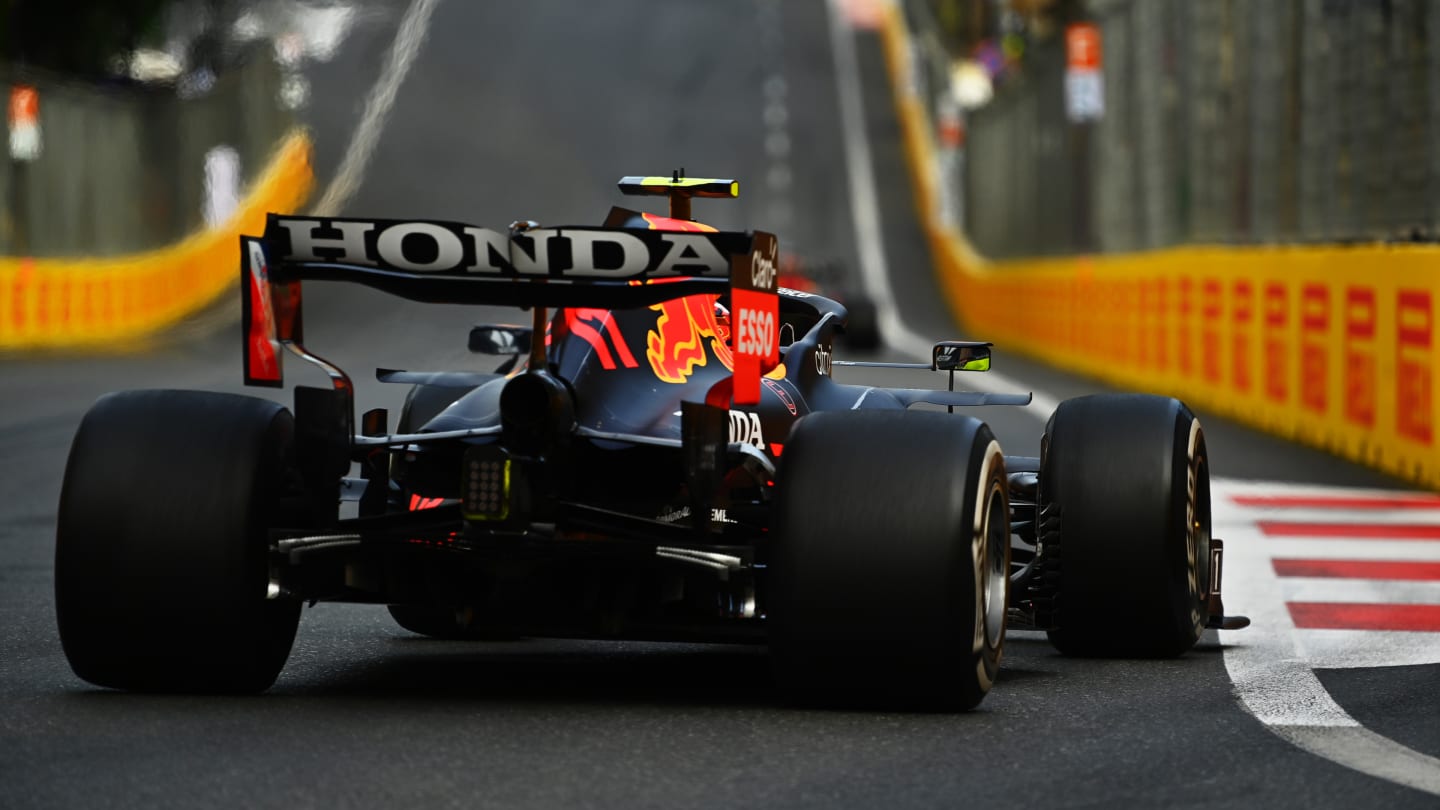
Perez was able to extract pace from his car without causing high levels of tyre degradation on Sunday
Perez was brought in on the following lap. Despite tyres two laps older than Hamilton’s, he had more tyre left than either of them. Unlike Max, he hadn’t been attacking, but just sitting a respectful distance behind his team mate. That and the protection given by that bigger rear wing gave him enough tyre grip to better Hamilton’s in-lap by a full 1.258s.
This leapfrogged both Red Bulls past the Mercedes. Superior tyre deg from the bigger wing put them in their rightful position as the fastest cars.
A look at Leclerc’s lap times on his extreme skinny wing underlines the point. Initially lapping around 0.2s slower than Hamilton, he could not even maintain this quite conservative pace. By the sixth lap he is in the high 1m 47s, then the mid 1m 48s. He was brought in on Lap 9.
That summarises the difficult choice presented by Baku’s strange mix of a Monaco-like middle sector and Monza-like final sector. Depending upon how quick your car is, the wing/tyre deg trade-off will be in a different place.
RACE HIGHLIGHTS: See all the action from an extraordinary win for Perez in the Azerbaijan GP
YOU MIGHT ALSO LIKE
News ‘We have a duty of care to protect and develop Liam’ – Horner opens up on decision to replace Lawson at Red Bull
Video LIVESTREAM: Catch the action from Qualifying for Round 11 of the 2025 F1 Sim Racing World Championship
News Tsunoda to replace Lawson at Red Bull from Japanese GP as New Zealander drops down to Racing Bulls

Feature Broken bones, Hamilton’s friendship and goosebumps at Williams – Getting to know the real James Vowles
